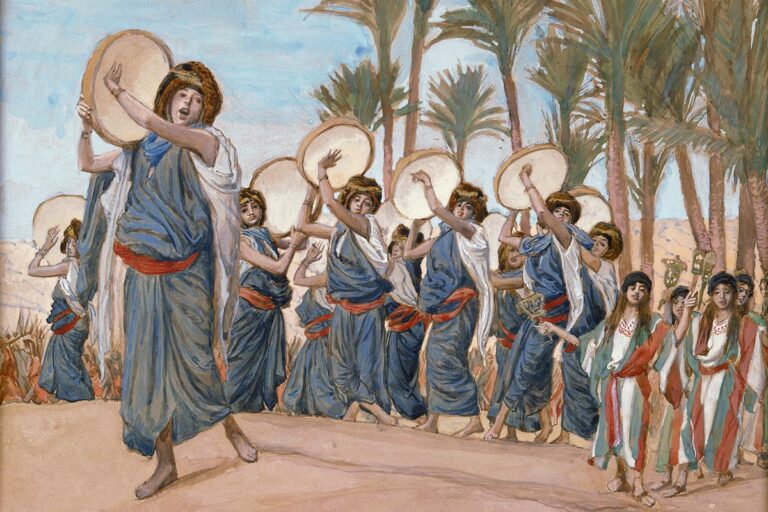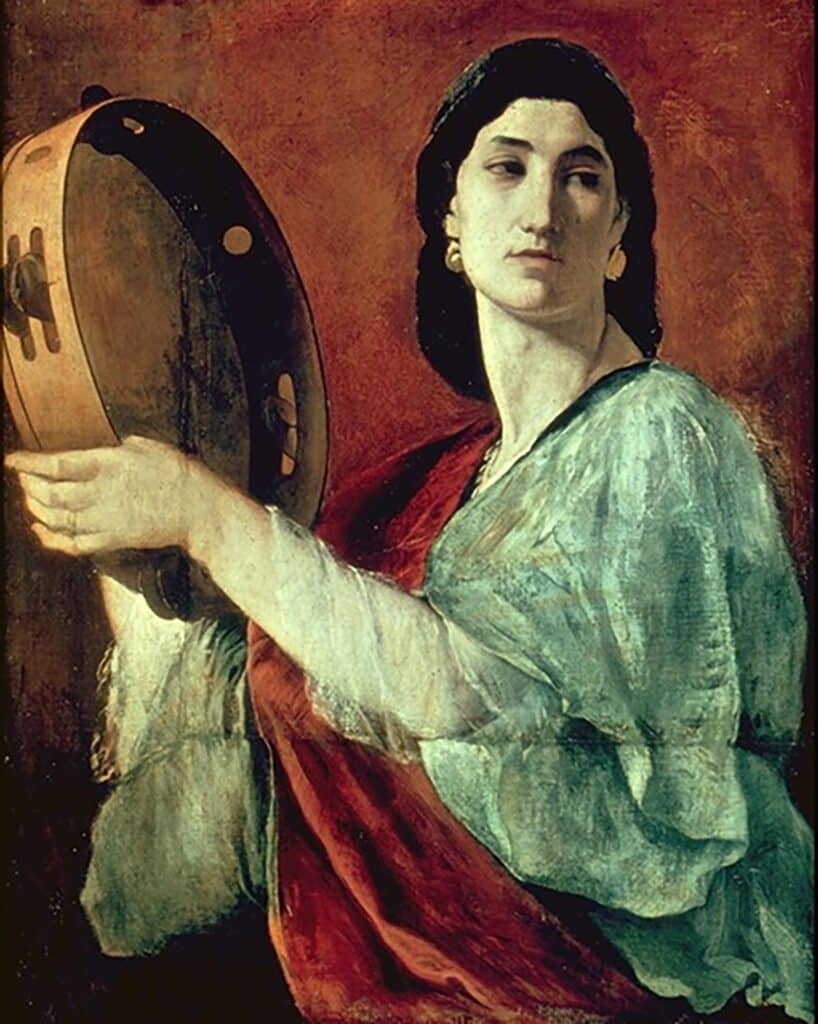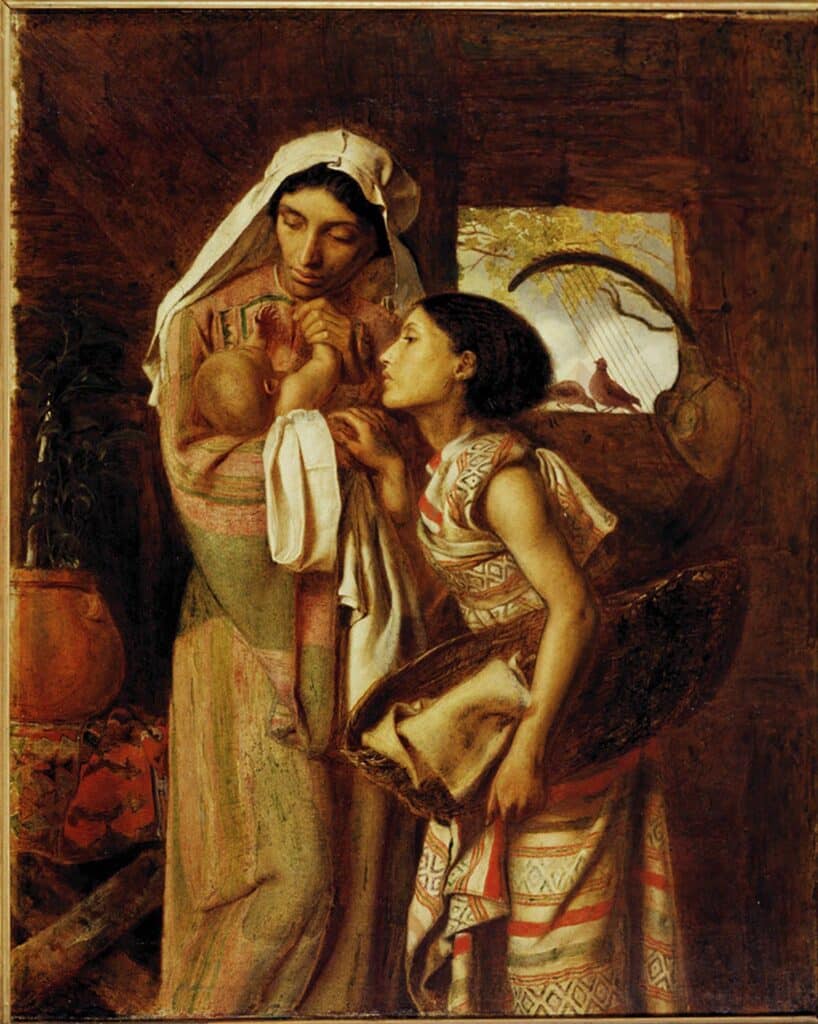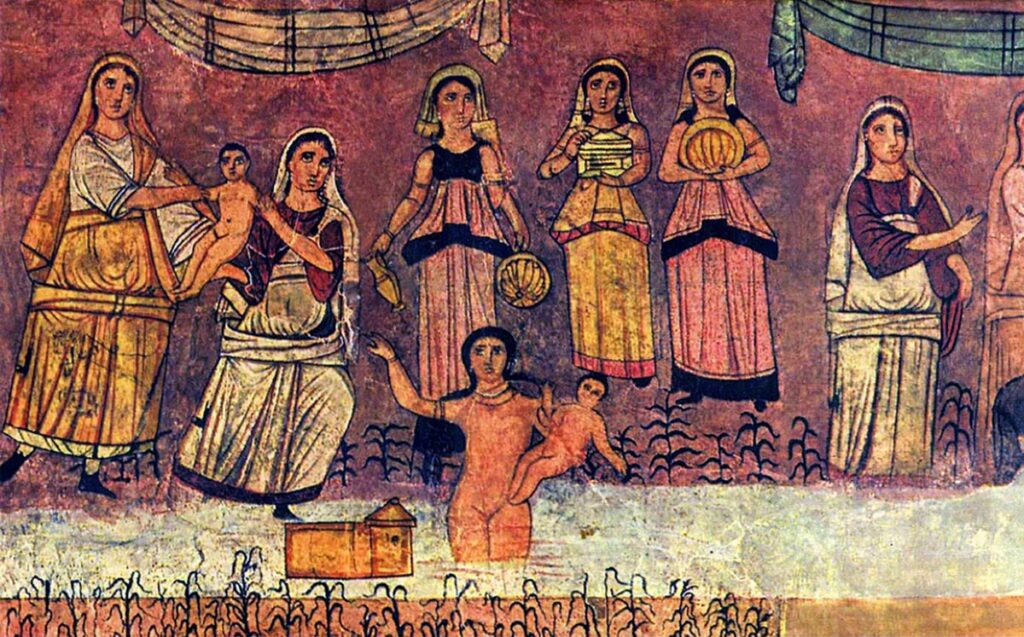
Every year on Passover, we retell the story of the Jewish people’s miraculous exodus from Egypt, the journey from slavery to freedom. At the seder, we read from the Haggadah, retelling and reenacting the story of how Moses, with divine help, led the Israelites out of Egypt.
Since many haggadahs only provide a general overview of the story, you might not learn too much about all of the characters who played a role in the Jewish people’s redemption. Even more so, women have often been overlooked in history — their contributions rarely acknowledged.
However, women were instrumental in bringing about the Jewish people’s exodus from Egypt. Since the seders are coming up on April 5 and 6 (you’re welcome), here is an overview of the women your Hebrew school teacher likely didn’t go into detail about.
What role did women play in the Exodus story?
The Talmud says: “Rav Avira taught: In the merit of the righteous women that were in that generation, the Jewish people were redeemed from Egypt.”1 What does that mean? We’ll break it down for you.
To fully understand what the Talmud is saying, we need to go back to the Passover story. Pharoah decided that there were too many Jewish people in Egypt, so he issued a genocidal decree: every Jewish newborn male would be thrown into the Nile River to drown.2
However, commentators discuss how Jewish women defied Pharoah’s decree by continuing to have children and feed them, ensuring the Jewish people would live on. While they were supposed to be separated from their husbands, these women continued to find closeness and rear children.3
Because the women defied Pharoah’s decree, God redeemed the Israelites from Egypt and allowed them to escape slavery.
Miriam
Miriam, Moses’ sister, was definitely one of the “righteous” women of the redemption story, arguably the most prominent. One of the seven women prophets in the Tanakh, Miriam began prophesying in her childhood, and she used these prophecies to get the Passover story rolling.

Following Pharoah’s edict that every Jewish baby boy would be cast into the Nile, Miriam’s father, Amram, concluded that there was no point in having children and divorced his wife and Miriam’s mother, Yocheved.4
Amram, understandably, could not bear the idea of having a child, only to see it drowned in the Nile. Among the Jewish men of Egypt, Amram was extremely influential, so his decision to divorce encouraged the other men to do the same.
As the story in the Talmud goes, Miriam challenged her father’s decision. She spoke up, saying, “Father, your decree is more harsh for the Jewish people than that of Pharaoh, as Pharaoh decreed only with regard to the males, but you decreed both on the males and on the females. And now no children will be born.”
In short, Miriam called her father out for preventing any new Jewish babies from being born because of his decision to divorce Yocheved, and was adamant that he should reverse it.
Ultimately, she convinced her father to remarry Yocheved and defy Pharoah. All of Israel saw this, and the other Jewish men remarried their wives.5
Even before Moses was born, Miriam prophesied that her mother was “destined to bear a son who will deliver the Jewish people to salvation.”6 As a result, when her mom placed baby Moses in the basket, she remained hopeful that everything would be OK.7

Not only was Miriam a prophet, but she was also an accomplished song leader — so pretty much the leading Jewish singer of her day. When the Jewish people were finally freed and crossed the Red Sea, Miriam led the women in song and dance.
Miriam and the other women brought timbrels with them because they “were confident that God would perform miracles for them.”8
Her story is told in fellow iconic Jewish artist Debbie Friedman’s “Miriam’s Song,” which is an absolute banger.
Yocheved
The rabbis identify Yocheved as Shiphrah, one of the two Hebrew midwives (along with Puah) who attempted to save the newborn baby boys.
The Torah says that because the midwives feared God and defied Pharoah’s decree, “God established households” for them, meaning “royal households,” according to Rashi.9

She was also blessed with three children Moses, Miriam and Aaron who grew up to become the leaders of the Israelites during the Exodus.
For her good deeds, God allowed her to get pregnant at the age of 130 (40 years older than Sarah!) and restored her beauty and youth.10 Her newly-bequeathed youthfulness allowed her to survive the 40-year trek through the desert and even to enter the Land of Israel, according to one midrash.
In another gift from God, after Jocheved placed baby Moses in the basket in the river, the most painful moment, she was reunited with her child, acting as his wet nurse.11
Batya
Batya is referred to as Pharaoh’s daughter who saw baby Moses floating in the basket along the river, just as she was bathing in the Nile. Batya recognized immediately that he was a Jewish child, but took pity on the baby and saved him from Pharoah.12

In one explanation of why she did this, told in the Talmud, Batya’s handmaidens tried to convince her not to save the Jewish baby boy.13 They argued that as a member of the Pharaoh’s family, it was particularly important for her to follow his decree and set an example. Immediately afterward, the angel Gabriel arrived at the scene and beat the handmaidens to the ground, killing them.
For resisting the handmaidens’ influence and saving baby Moses, God embraced Batya: “Moses was not your son, yet you called him your son; you are not My daughter, but I call you My daughter.14
In addition, according to the midrash, since Batya loved Moses as her own son, she was the only firstborn Egyptian who was not killed by the 10th plague.15
Footnotes:
- Sotah 11b
- Shemot/Exodus 1:22
- Midrash Tanchuma Pekudei 9
- Sotah 12a
- Sotah 12a
- Megillah 14a
- Shemot/Exodus 2:4; Avivah Zornberg, “The Particulars of Rapture: Reflections on Exodus,” p. 70
- Rashi
- Rashi, Shemot/Exodus 1:21
- Bava Batra 119b – 120a
- Shemot/Exodus 2: 7-8
- Shemot/Exodus 2: 5-10
- Sotah 12b
- Vayikra Rabbah 1:3
- Shemot Rabbah 18:3
Originally Published Mar 31, 2023 04:41PM EDT
